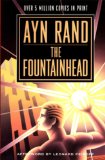Olivier Langlois's blog
Michael Abrash's Graphics programming Black book
06/09/07
Michael Abrash's Graphics programming Black book
This book is a monster brick of over 1300 pages with 70 chapters! Do not be misled by the book title because the 22 first chapters, which represents about the third of the 1300 pages, discuss assembly optimization. This book is getting a little bit old and a little bit outdated. For instance, this author covers optimization techniques for processors ranging from the 8088 to the Pentium and the Inner loops book covers the 486 to the Pentium Pro.
The second part covers low level graphics programming in assembly. The type of graphics programming that people were doing before Windows and DirectX.
Because assembly programming is not very popular anymore, for most people, it is not a good book to get but if assembly optimization is your thing, then you should consider this one as even if there are more recent books on x86 assembly programming, this one is the best that I have seen to lay out the basic concepts such as branch prediction, register contention, how to shuffle assembly instructions to optimize the processor pipelines usage and how to optimize the flag register usage. Armed with this knowledge in the back of your head, even when you write C or C++, you will be able to subtly change the way you formulate if/else blocks and for/while loops that will enhance your program performance without affecting the code readability.
Comments, Pingbacks:
No Comments/Pingbacks for this post yet...
This post has 2 feedbacks awaiting moderation...
Comments are closed for this post.
Olivier Langlois's blog
I want you to find in this blog informations about C++ programming that I had a hard time to find in the first place on the web.
| Sun | Mon | Tue | Wed | Thu | Fri | Sat |
|---|---|---|---|---|---|---|
| << < | > >> | |||||
| 1 | 2 | 3 | 4 | 5 | 6 | |
| 7 | 8 | 9 | 10 | 11 | 12 | 13 |
| 14 | 15 | 16 | 17 | 18 | 19 | 20 |
| 21 | 22 | 23 | 24 | 25 | 26 | 27 |
| 28 | 29 | 30 | 31 | |||
Search

Categories
Olivier Langlois's blog
- AAC (2)
- Book reviews (12)
- C++ (24)
- Code Optimization (4)
- Compiler (3)
- Fractal (2)
- Linux/UNIX (3)
- Multithreading (3)
- Software security (7)
- TCP/IP (8)
- Web (1)
- Windows programming (19)
- C++ (28)
- tutorials (4)
- General (10)
- Hardware reviews (2)
- Linux (12)
- Recommended books (4)
- C++ (20)
- Code Optimization (2)
- Compiler (3)
- Fractal (2)
- Linux/UNIX (1)
- Multithreading (2)
- Rare out of print (3)
- Software security (5)
- TCP/IP (7)
- Windows programming (16)
- Software reviews (0)
- TCP/IP (8)
- Video games (4)
Archives
- January 2016 (1)
- September 2015 (1)
- July 2015 (1)
- June 2015 (1)
- May 2015 (1)
- December 2013 (3)
- September 2013 (1)
- May 2013 (8)
- April 2013 (1)
- December 2010 (1)
- August 2010 (1)
- June 2010 (1)
- More...
Misc
 XML Feeds
XML Feeds
What is RSS?
Who's Online?
- Guest Users: 2
 BOOKS i'm reading
BOOKS i'm reading




